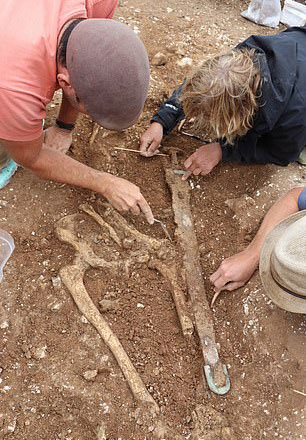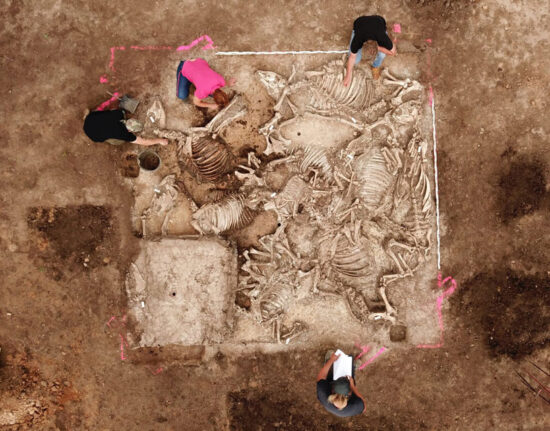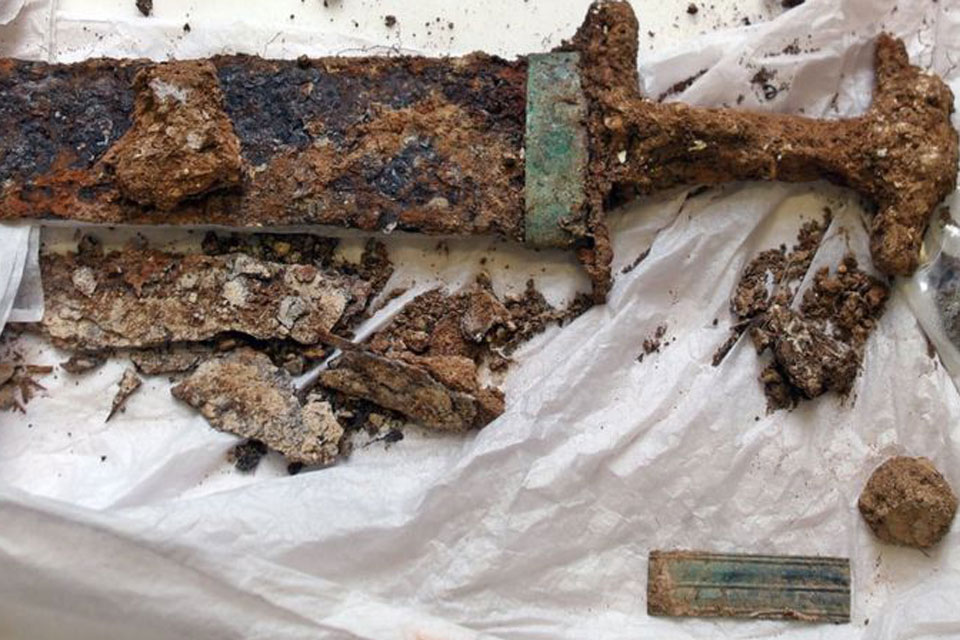Two Migration Period Graves are considered “once-in-a-lifetime” finds in England and Germany
Currently, a spectacular burial ground in Sachsen-Anhalt near the German village of Brücken-Hackpfüffel is being excavated. Undisturbed by ploughing, the 60 graves – including that of a magnificent burial of what is likely a chieftain – have been undisturbed since ca. AD 480 – 600. From the same period, a warlord’s grave is being excavated in the Thames Valley, yielding insight into the very early Anglo-Saxon migration to Britain in the 5thcentury. Together, the two graves open up for a better understanding of events taking place during the migration period.
The Marlow Warlord

In early autumn an excavation near Marlow revealed the remains of a tall and robust Anglo-Saxon warrior, buried in the 6thcentury. Both his skeleton and his possessions have been well-preserved and further studies are expected to present us with a detailed history of the man, where he came from, and perhaps where his weapons were made. The man, himself, was six feet tall, robust and likely a respected leader of his local tribe or group. His grave was located on a hill, oriented north/south and overlooking the river Thames, perhaps indicating a pagan-type burial. He was buried alongside an array of expensive luxuries and weapons – a sword in a decorated scabbard, spears, bronze and glass vessels, as well as other personal accoutrements.
– This the first burial of its kind found in the mid-Thames basin, which is often overlooked in favour of the Upper Thames and London. It suggests that the people living in this region may have been more important than historians previously suspected, says Gabor Thomas, an archaeologist from Reading University.
This stretch of the river – between London and Oxford – has hitherto been considered part of what was earlier a forested and hilly borderland acting as a barrier between the south and the north. Twelve km to the south-east, the burial-ground at Taplow with its famous drinking horns and feasting gear, present an interesting comparative context.
The Germanic Prince

Meanwhile on the continent, another group of archaeologists have made an even more spectacular find in the form of an undisturbed burial ground near the village of Brücken-Hackpfüffel, halfway between Göttingen and Leipzig. The archaeologists expect to locate nearby the princely manor ca. AD 480-550, to which the burial ground belonged.
So-far archaeologists have uncovered a glass bowl with swirl decoration in pristine condition, a glass spindle whorl, silver gilt fibulas on one of which a piece of textile had been preserved by the metal. Also a sword, a glass lamp, and part of a shield. An important find is a coin minted during the reign of Zeno, ca. AD 480, helping to date the finds. On one of the fibulas, the metal had preserved part of a textile.
Of particular interest is the central grave, which was located beneath a mound. At the centre, archaeologists a ditch or grave was holding a group of eleven large animals – oxen, horses, and dogs. This pit of animals was at the centre of six graves radiating from the centre and holding the remains of females. In a corner, the archaeologists found what they believe is a huge bronze-kettle or cauldron. Perhaps, the remains of the local magnate were buried there.
SOURCES:
Sensationsfund in alten Gräberfeld
Vom Thomas Schöne
